
Flood lights are essential tools for lighting contractors, providing versatile illumination for a variety of applications. Whether it’s for security, sports, or architectural purposes, understanding the nuances of flood lights can significantly enhance a contractor’s service offerings. This article delves into the key aspects of flood lights that every lighting contractor should be familiar with.
Flood lights are powerful lighting fixtures designed to illuminate large areas with broad beams of light. They are commonly used in outdoor settings, such as parking lots, sports fields, and building facades. Their ability to provide high-intensity lighting makes them invaluable for both safety and aesthetic purposes.
Flood lights come in various types, each suited for specific applications. The most common types include LED, halogen, and metal halide flood lights. Understanding the differences between these types can help contractors recommend the best option for their clients.
LED flood lights are increasingly popular due to their energy efficiency and long lifespan. They consume significantly less power compared to traditional options, which translates to lower electricity bills for clients. Halogen flood lights, while less efficient, provide a warm light that some clients prefer for aesthetic reasons. Metal halide flood lights offer bright, white light and are often used in sports facilities, but they require more maintenance and have a shorter lifespan than LEDs.
Flood lights serve a multitude of purposes, making them a versatile choice for contractors. They are commonly used for security lighting, ensuring that properties are well-lit and deterring potential intruders. In recreational settings, flood lights illuminate sports fields and courts, allowing for extended playtime after sunset.
Architectural lighting is another significant application. Flood lights can enhance the visual appeal of buildings and landscapes, creating dramatic effects that highlight features and textures. This versatility allows contractors to cater to a wide range of client needs.
In addition to security and aesthetics, flood lights are also essential for event lighting. Outdoor gatherings, such as concerts, festivals, and weddings, often require robust lighting solutions to ensure safety and visibility for attendees. The right flood lighting can transform a simple outdoor space into a vibrant venue, creating an inviting atmosphere that enhances the overall experience. Moreover, with advancements in smart lighting technology, flood lights can now be integrated with automation systems, allowing for remote control and customizable lighting schedules, further expanding their functionality in various settings.
Furthermore, flood lights play a crucial role in industrial applications. Warehouses and manufacturing facilities often utilize flood lighting to ensure safe working conditions during night shifts. Properly illuminated workspaces not only enhance productivity but also significantly reduce the risk of accidents. As industries continue to evolve, the demand for efficient and effective flood lighting solutions remains high, prompting ongoing innovations in design and technology to meet these needs.
When working with flood lights, there are several important considerations that contractors should keep in mind to ensure optimal performance and client satisfaction.
Brightness is a crucial factor when selecting flood lights. Measured in lumens, it indicates how much light a fixture emits. Contractors should assess the specific lighting needs of each project to determine the appropriate lumen output. For example, a parking lot may require brighter lights than a residential garden.
It’s also important to consider the distribution of light. Flood lights with adjustable beams can provide flexibility, allowing contractors to direct light where it’s needed most. This adaptability can enhance safety and functionality in various settings. Additionally, the color temperature of the light, measured in Kelvins, can significantly affect the ambiance of a space. Warmer tones (around 2700K to 3000K) can create a cozy atmosphere, ideal for residential areas, while cooler tones (5000K and above) are often preferred for commercial spaces, as they mimic daylight and improve visibility.
Proper installation and positioning of flood lights are vital for achieving the desired lighting effect. Contractors should consider the height and angle of the fixtures to minimize shadows and ensure even illumination. Additionally, the placement should account for potential obstructions, such as trees or buildings, that could block the light.
Moreover, it’s essential to comply with local regulations and safety standards during installation. This not only protects the contractor but also ensures that the lighting system is safe and effective for the end-users. Furthermore, contractors should also think about the long-term maintenance of the flood lights. Choosing fixtures that are durable and weather-resistant can reduce the frequency of replacements and repairs, ultimately saving clients time and money. Incorporating smart technology, such as motion sensors or timers, can also enhance energy efficiency and provide added convenience for users, making the lighting system more versatile and user-friendly.
As energy costs rise and environmental concerns grow, energy efficiency has become a priority for many clients. Flood lights, particularly LED options, offer a sustainable solution that can significantly reduce energy consumption. The shift towards energy-efficient lighting is not just a trend; it’s a necessary adaptation to the pressing challenges of climate change and resource depletion. By choosing LED flood lights, clients are not only making a financial investment but also contributing to a larger movement towards sustainability.
LED flood lights are known for their longevity, often lasting up to 25,000 hours or more. This durability means fewer replacements and less waste, making them an eco-friendly choice. Additionally, their low energy consumption can lead to substantial savings on electricity bills, which is an attractive selling point for contractors. Beyond the financial benefits, LED flood lights also provide superior illumination quality, enhancing safety and visibility in outdoor spaces. This is particularly important for commercial properties, where well-lit areas can deter crime and improve the overall aesthetic appeal of the premises.
Contractors should also educate clients on the benefits of smart lighting systems that can further enhance energy efficiency. These systems allow for automated control of flood lights, enabling features like dimming and scheduling, which can optimize energy use based on actual needs. For instance, integrating motion sensors can ensure that lights are only activated when necessary, further reducing energy waste. Additionally, smart systems can be programmed to adjust brightness based on the time of day or ambient light levels, providing a tailored lighting experience that aligns with both comfort and efficiency.
With the increasing use of LED technology, contractors must also be aware of proper recycling and disposal methods for flood lights. Many components, such as the electronics and housing materials, can be recycled. Educating clients about responsible disposal can enhance a contractor’s reputation as a sustainable business. Furthermore, the importance of recycling extends beyond just the physical components; it also encompasses the reduction of hazardous materials that can harm the environment. By promoting recycling initiatives, contractors can play a pivotal role in minimizing the ecological footprint of their projects.
Furthermore, staying informed about local regulations regarding electronic waste disposal is crucial. This knowledge not only helps contractors comply with laws but also positions them as environmentally conscious professionals in the eyes of their clients. Many municipalities offer specific programs for the disposal of electronic waste, and contractors can facilitate this process for their clients, ensuring that old lighting fixtures are disposed of in an environmentally responsible manner. By actively participating in these initiatives, contractors can demonstrate their commitment to sustainability and encourage clients to make informed decisions that benefit both their wallets and the planet.
When recommending flood lights to clients, contractors should take a consultative approach, assessing their specific needs and preferences. This process involves understanding the intended use, desired brightness, and aesthetic considerations.
Engaging in a thorough consultation with clients can help contractors gather essential information. Questions about the area to be illuminated, the purpose of the lighting, and any specific design preferences can guide the selection process. This personalized approach not only ensures client satisfaction but also builds trust and rapport.
Contractors should also present clients with a range of options, highlighting the pros and cons of each type of flood light. Providing visual aids, such as photos or case studies, can help clients visualize the potential outcomes and make informed decisions.
Budget is often a significant factor in the decision-making process. Contractors should be prepared to offer solutions that fit within the client’s financial constraints while still meeting their lighting needs. This may involve suggesting a combination of different flood light types or exploring financing options.
By being transparent about costs and potential long-term savings, contractors can help clients understand the value of investing in quality flood lights. This approach not only enhances the contractor’s credibility but also fosters a positive client experience.
Regular maintenance is essential to ensure the longevity and performance of flood lights. Contractors should educate clients on the importance of routine inspections and upkeep to prevent issues before they arise.
Encouraging clients to conduct routine inspections can help identify problems such as burnt-out bulbs or damaged fixtures early on. This proactive approach can save clients money in the long run by avoiding costly repairs or replacements.
Contractors can also offer maintenance services as part of their offerings, providing clients with peace of mind and ensuring that their lighting systems remain in optimal condition. This service can be a valuable addition to a contractor’s business model, fostering long-term relationships with clients.
As technology continues to evolve, upgrading existing flood light systems may become necessary to keep pace with advancements in efficiency and performance. Contractors should stay informed about the latest innovations in flood lighting technology and be prepared to recommend upgrades when appropriate.
By positioning themselves as knowledgeable experts in the field, contractors can enhance their reputation and attract new clients who value quality and expertise.
Flood lights are a vital component of many lighting projects, and understanding their various aspects can significantly benefit lighting contractors. From selecting the right type of flood light to ensuring proper installation and maintenance, contractors play a crucial role in delivering effective lighting solutions.
By staying informed about the latest trends and technologies, contractors can provide exceptional service that meets the evolving needs of their clients. Embracing energy efficiency and sustainability will not only enhance their offerings but also contribute positively to the environment.
In a competitive market, knowledge and expertise in flood lights can set contractors apart, allowing them to build lasting relationships with clients and grow their businesses successfully.
Ready to elevate your lighting projects with the best in flood lights? Look no further than LumenWholesale. Our commitment to quality and affordability ensures that you have access to spec-grade lighting products that meet the highest industry standards. Say goodbye to inflated markups and hello to unbeatable wholesale prices, complete with the convenience of free shipping on bulk orders. Don’t compromise on performance or cost—choose LumenWholesale for Wholesale Lighting at the Best Value and light up your client’s world with confidence.
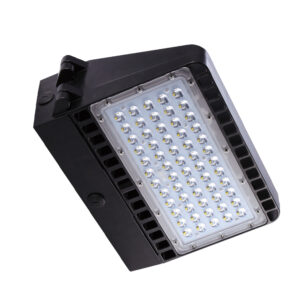
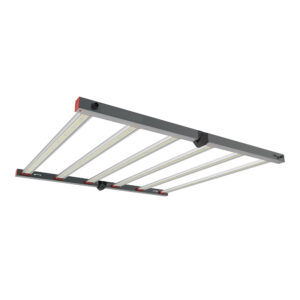
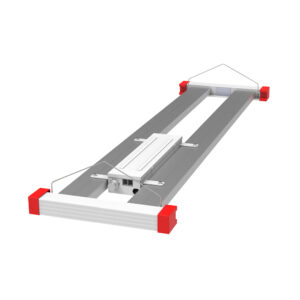
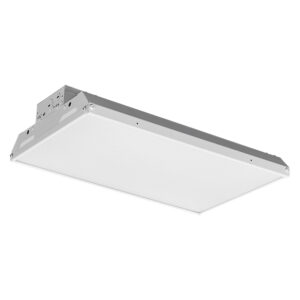
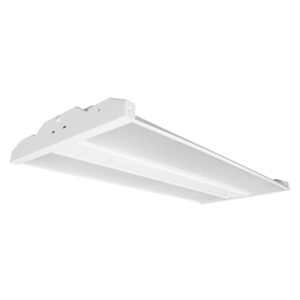
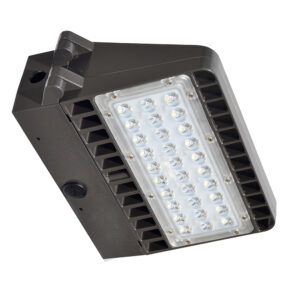

Discover the essential insights every lighting contractor needs to know about LED ceiling lights.

Discover why opting for local distributors might not be the best choice when purchasing refrigeration lighting in bulk.

Discover why purchasing industrial lighting in bulk from local distributors might not be the best choice.

Discover essential insights into bathroom lighting that every contractor should know.
Get notified when NEW deals are released.
Optimize your budget with wholesale discounts.
Only top-quality, specification-grade lighting products.
No additional costs at checkout - what you see is what you pay.
We understand the unique needs of contractors.